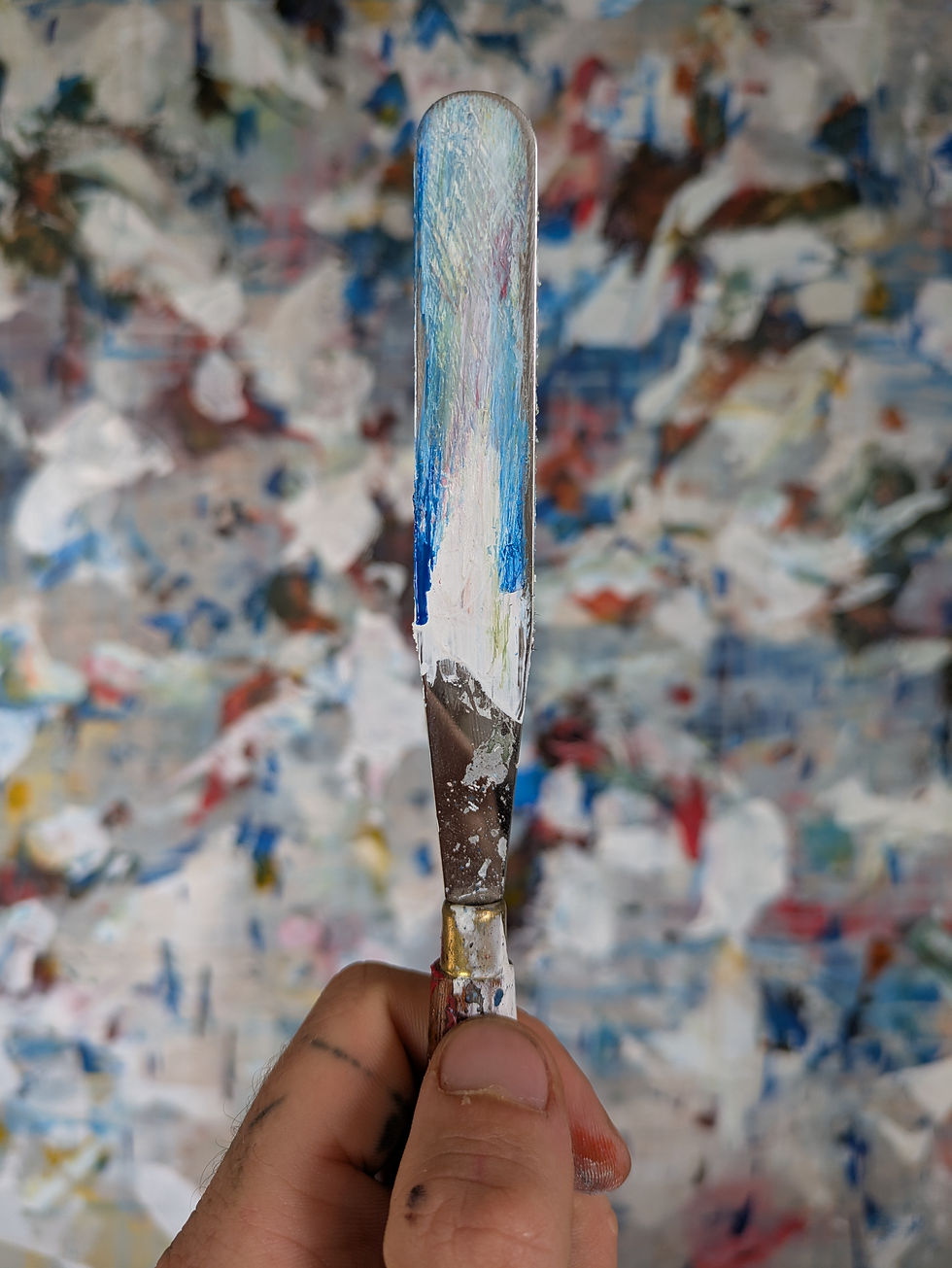the living mystery
- Jakub Sohe

- Sep 4
- 3 min read
Updated: Oct 6
God is the living mystery at the root of existence — not a being among beings, but Being itself: the depth dimension of reality, the unnameable ground from which symbol and myth arise. God is not an idea to believe in, nor a proposition to defend, but the pulse of meaning that moves through all things, the presence that makes life more than survival. To speak of God is to gesture toward that which both exceeds us and dwells within us — the wholeness that calls each fragment home.
The ancients clothed this mystery in myth, ritual, and image, but the essence has never changed. God is the Self that draws the psyche toward integration, the pattern that threads through every culture’s stories, the sacred shimmering behind the ordinary. God is the presence the right hemisphere knows by participation, not by control — what can only be approached through reverence, not grasped through certainty.
To live with God is to enter a relationship, not obedience to an external power but dialogue with the depths. It is a lifelong dance with mystery, where we are shaped as much by what we cannot name as by what we can. One wrestles with God, as Jacob wrestled the angel, because the divine is not tame — it wounds and blesses in the same gesture. One listens, because God speaks in symbols, dreams, and synchronicities, never in arguments. One remembers, because the sacred is not elsewhere but here — in the breath, in the wound, in the face of another. One integrates, because the divine is not outside us but within us, calling us to become whole.
But the image of God, like all images, has a shadow. When the mystery is made too small — reduced to doctrine or system — the living God becomes a dead idol. When projected outward only — onto priests, leaders, heavens — we forget the divine within and submit to manipulation. When denied altogether, flattened to matter and mechanism, the psyche starves for meaning and creates false gods: money, power, progress, ego. And when confused with the ego itself, the result is hubris — the self enthroned, cut off from its own source.
Every age must renew the image of God or suffer its distortion. The antidote is to keep the image alive, symbolic, fluid — to hold paradox without collapse. The divine must remain both immanent and transcendent, both terrifying and tender, both utterly other and utterly near. Only then does the relationship stay transformative instead of tyrannical.
In our time, the old containers have cracked. The collective myths no longer hold, yet the hunger for meaning remains. To consciously engage the sacred now requires subtlety — not revival of dogma but awakening of imagination. God speaks again through art, dream, and poetry; through the rituals we create from silence and attention; through the mythic awareness that reads one’s life as a story of descent and return. The sacred is found not by rejecting the world but by seeing it whole — science and spirit, reason and mystery, left and right, reconciled.
If we neglect this dimension, it does not vanish — it goes underground. The unacknowledged sacred becomes pathology. The neglected archetype turns inward as despair, anxiety, or numbness. Myth mutates into consumerism, nationalism, spectacle. The world loses depth, and suffering becomes absurd rather than initiatory. The ego, untempered by the sacred, swells to fill the void — and the gods we thought we left behind return in monstrous form.
Yet even now the mystery waits. A living image of God for our time must not be fixed or final. It must breathe — symbolic rather than literal, relational rather than authoritarian, experiential rather than dogmatic. God as Wholeness, integrating opposites. God as Mystery, inexhaustible. God as Relationship, the living field between. God as Sacred Process, the rhythm of death and rebirth. God as both immanent and transcendent, shining through matter yet beyond comprehension.
Such an image does not demand belief — it invites participation. It does not offer certainty — it opens depth. It does not divide — it integrates.
To live with God today is to live consciously with the mystery that grounds and exceeds us, to let it shape our seeing, our suffering, our creating. The task is not to define the sacred, but to encounter it — to live in dialogue with that which forever escapes definition, and yet is closer than our own breath. The real question was never whether God exists. The question is whether we will live in relationship with the mystery that does.



Comments